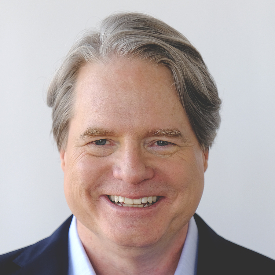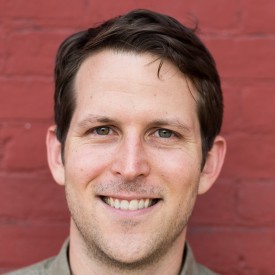Michael Morris is a cultural psychologist and professor at Columbia University in its Department of Psychology and graduate Business School. Previously, he taught for a decade at Stanford University. He conducts behavioral science research and advises corporations, government agencies, NGOs, and political campaigns about culture-related issues.
What’s the big idea?
Tribalism is commonly spotlighted for its dangers and risks, but tribal instincts should be equally credited for the best of human instincts. Our tribal nature gave us superpowers of collective action and progressive innovation. By understanding how tribalism triggers thoughts and actions, it can be used to steer change, forge bonds, and accomplish greatness.
Below, Michael shares five key insights from his new book, Tribal: How the Cultural Instincts That Divide Us Can Help Bring Us Together. Listen to the audio version—read by Michael himself—in the Next Big Idea App.

1. Tribal instincts made us human in the first place.
You belong to many tribes: the United States is a tribe, the New Economy is a tribe, and even the Next Big Idea Club. Tribe can be defined as a large social network bound together by shared ideas. This is the original meaning of the Latin term tribe that I hope to reclaim. It describes a quintessential human experience of connection based on common understanding that is increasingly forgotten in organizations and campaigns—to their detriment.
Tribe and tribal shouldn’t be dirty words. The media often portrays human adaptations for connecting to groups as our worst instincts because they can inflame conflicts. However, they are equally our best instincts because they empower the positive things we accomplish collectively. Tribal loyalty is the strongest human motivation. Great leaders have always figured out ways to harness tribalism to galvanize commitment, forge coalitions, and steer change.
I grew up thinking of group-oriented motivations like conformity, status-seeking, and nostalgia for past generations as bugs in the system of an otherwise intelligent species. But after decades as a behavioral scientist, I’ve come to understand that they are features. Group impulses may sometimes be irrational, but they are intrinsic parts of human psychology.
“Tribe and tribal shouldn’t be dirty words.”
Our group-oriented motivations evolved in the Stone Age to promote the sharing of ideas in groups. These culture-creating impulses enabled the formation of larger and more collaborative communities. Even strangers could be trusted if they shared your greeting rituals, social frameworks, and ideals. The radius of trust expanded beyond kith and kin to broader networks.
Behavioral scientists used to debate nature vs. nurture. In the past decade, they’ve concluded that human nature is nurture. We are wired to encode the patterns of the communities that nurture us and then enact these patterns. Recent discoveries about our social brains and our forebears’ social lives have upended the well-worn 20th-century narrative about the human journey, that our forebears were hardly more social than chimpanzees who only knew tiny bands of fellow foragers until the agricultural revolution gave rise to scale, surplus, and symbolic activities. However, we now know:
- Temple building and other ritual collaborations long preceded agriculture.
- Clan-level cooperation in hunts began hundreds of thousands of years ago.
- The early cultural evolution of human groups shaped our genetic evolution.
These revelations have inspired a new origin story for our species that places tribes and tribal instincts at the center of the plot.
2. Three basic tribal instincts still shape us today.
Three waves of group psychology evolved over the course of the Stone Age:
- The peer instinct to imitate and mesh with those around us.
- The hero instinct to emulate the respected contributors in the community.
- The ancestor instinct to perpetuate the ways of prior generations.
Each successive instinct made our forebears more cultural and more collaborative:
- First, we became capable of coordinating to hunt and gather based on shared goals.
- Then, we became able to cooperate in the sense of sacrifice to help the group.
- Finally, we preserved the knowledge of prior generations.
Once all three instincts were in place, the real magic of tribal living started. Groups didn’t need to reinvent the wheel each generation. Innovations that worked would get emulated and propagated. The result was cumulative cultural evolution; cultures grew more prosperous and relevant over time. Individuals became more capable because they could access a legacy of shared knowledge.
These three systems still operate in group psychology today:
- First, we sideways glance at classmates, coworkers, and neighbors to learn what’s normal in these groups and feel comfort when conforming to our findings. This reflects peer instinct processing. It can limit our independent thinking, but it’s why we can meld minds and mesh actions with in-group members so readily, working as a united front.
- Next, we peek into the lives of CEOs, MVPs, and rock stars, yearn for their renown, and often take on the quirks we observe. This evinces the hero instinct. It’s why clickbait pulls us in about what quarterbacks eat for breakfast or whether the President wears boxers or briefs. But it’s also why successful innovations get noticed and adopted.
- Finally, the ancestor instinct lingers in our backward-looking curiosity about past generations, our fascination with founders, histories, and antiques, and our ache to maintain traditions. Our compulsion to carry forward tribal traditions is why some myths and rituals persist across centuries, but it is also why the defense of traditions under perceived threat can stir up moral absolutism and extremist actions.
Our needs for belonging, standing, and continuity motivate us to engage with and enact the patterns of our culture.
3. Cultures are manageable. We can cue cultures through tribal triggers.
The cultural patterns of individuals and groups fluctuate from one setting to the next. The underlying reason for this mutability is multiplicity. We pick up new cultural identities and codes with each new community that nurtures us—religions, professions, vocations, avocations, etc. As Walt Whitman put it: “I am large, I contain multitudes.” Because the imperatives of different identities contradict, our cultural codes cannot always be on. They take turns, activating in response to situational cues. This situational triggering is familiar in the linguistic code-switching of politicians like Barack Obama, who speak in a different dialect depending on the audience they face. It’s a reflexive response to signs of a tribe they belong to, like faces or attire. My research has found that switching in response to triggers runs deeper than habits of communication; there are also switches in habits of mind that differ across cultures.
Situational triggers provide an important lever to managers who strive to summon identities and habits that help an endeavor. Increasingly, urban schools require uniforms to bring out student identities—instead of street clothes that may trigger distracting and divisive identities (rich vs. poor or Crips vs. Bloods). In the corporate world, the current return-to-office push comes in part from the realization that during work from home, individual productivity increases but collective productivity decreases. Workplaces surround employees with cues that make the organizational culture salient. These conventions stay top of mind for those at the office and channel decision-making in consistent directions. However, when managers want creative and new ideas, they hold retreats off-site so that the firm’s conventions don’t constrain thoughts.
“Situational triggers provide an important lever to managers who strive to summon identities and habits that help an endeavor.”
While the peer codes that carry cultural habits are triggered by tribemates, the hero codes that carry ideals and the ancestor codes that carry traditions activate in response to specific experiences. Hero codes activate in response to tribal symbols, like the iconic images, phrases, or songs a community uses to stand for itself. In the past, Crusaders were recruited to sacrifice their comfort by the Christian symbol of the Cross, and soldiers followed their nations’ flags into battle. Today, mascots send sports fans into a frenzy, and corporate mottos inspire employes. Ancestor codes are triggered by the symbolic experience of ceremonies and group events that involve history and synchrony. For example, political rallies referencing past fights and chanting slogans raise feelings of obligation to tribal tradition.
Evoking cultural strengths and loyalty requires rigging an environment with triggers. Politicians, coaches, and CEOs know that cultural habits surface in particular settings, cultural ideals can be stoked by symbols and cultural traditions can be summoned by ceremonies.
4. Cultures are malleable. You can lead change through tribal signals.
The three tribal instincts correspond to different mappings of community:
- peer-instinct: attention to what’s prevalent
- hero-instinct: interest in what’s prestigious
- ancestor-instinct: curiosity about what’s precedented
These three kinds of social information mold cultural codes and are key to re-molding these codes—changing the culture:
- Changemakers who want to shift cultural norms create prevalence signals. For example, when Kodak wanted to promote amateur photography, it ran ubiquitous ads with “Kodak girls” snapping photos on their travels. It also gave away cameras to schools and clubs and launched magazines featuring “snapshot” contests. By making it appear prevalent, Kodak lured consumers into trying amateur photography, setting off a cycle of changed practices that created a new normal.
- Changemakers who want to shift cultural ideals do so through prestige signals. To change people’s family planning behaviors, public health agencies have found fact-based programs less effective than soap operas with heroes or heroines that exemplify the desired behavior. Despite being fictional characters, they are still figures of prestige who serve as role models who reshape life goals.
- Changemakers who want to forge a cultural tradition do so through precedent signals. When Abraham Lincoln was inaugurated in 1860 with seven states seceded and a Civil War mounting, he promised the despairing nation that “the mystic chords of memory … will yet swell the chorus of the Union.” In 1863, shortly before referencing the founding fathers in his famous Gettysburg Address, Lincoln issued a proclamation asking Americans to set aside the last Thursday of November as a Thanksgiving holiday, referencing the precedent of Puritan Thanksgiving and George Washington’s one-time giving of thanks after the war. The public accepted the new holiday and soon embraced it as a sacred institution, coming to think of it as an unbroken tradition from the Pilgrims. This ritual meal and reflection on common ancestors helped heal the riven nation in the decades that followed the Civil War.
Because cultural codes are perceptions that get updated based on experiences, we can all be changemakers. We don’t just internalize signals from the peers, heroes, and ancestors of our tribe. We also send signals, whether intentionally or not. You will be a peer, a hero, and an ancestor to others, so your words and actions can shape the culture. If you understand the signals, you can sway conceptions of what is normal, what is normative, and what is traditional.
5. Don’t despair. We are not fated to toxic tribalism.
The competition between Democrats and Republicans has veered into dysfunctional conflict. Increasingly, our two-party system looks like a standoff between permanently polarized red and blue tribes. Political journalists have tried to make sense of this disturbing development by positing that an innate animus toward outsiders has reawakened in our politics, blurring our view of reality and blocking communication with the other side. These pundits express despair about fixing democracy, as if the genie is out of the bottle and there is no way to get it back inside.
This trope of toxic tribalism makes for riveting articles but not for helpful policies. It’s also an inaccurate picture of tribal instincts that science would not recognize. Human-specific social adaptations are instincts for solidarity, not hostility. They are primarily us instincts, not them instincts. Ingroup conformity, generosity, and traditionalism can indirectly contribute to conflicts, but it’s wrong to assert that political divides start from hostility.
“Political tribalism arises from unchecked peer-instinct processing.”
A large part of political tribalism comes from our affinity and conformity to our in-groups, the peer instinct motivation to mesh. Over the past two generations, this yearning for agreement has pushed many people toward living in partisan communities and listening to partisan news sources. In these new ideologically inbred communities, this conformist instinct has become dangerous. We’ve come to live in different realities, each party believing its own falsehoods, whether about Haitians consuming pets or JD Vance’s bond with his couch. The conformist processing happens automatically, so we are unaware of it; we think our political beliefs accurately reflect reality. Hence, we are baffled that the other side doesn’t agree, so we start to doubt their sincerity or cognitive acuity. Fear and loathing flow from these negative attributions.
Once we understand that political tribalism arises from unchecked peer-instinct processing, we can use what we know about triggers and signals to manage the influence of partisan frames in the short term and mold shared beliefs over the longer term. My book explains how you can avoid triggers of partisan frames (so they don’t constantly control your thinking) and how you can contribute to signals that move people toward common views of facts (so that they don’t reject each other as insincere or insane). The book looks at racial conflicts and religious conflicts, suggesting that they don’t arise from a toxic instinct of hate but from the familiar tribal instincts that we can manage.
To listen to the audio version read by author Michael Morris, download the Next Big Idea App today:
































